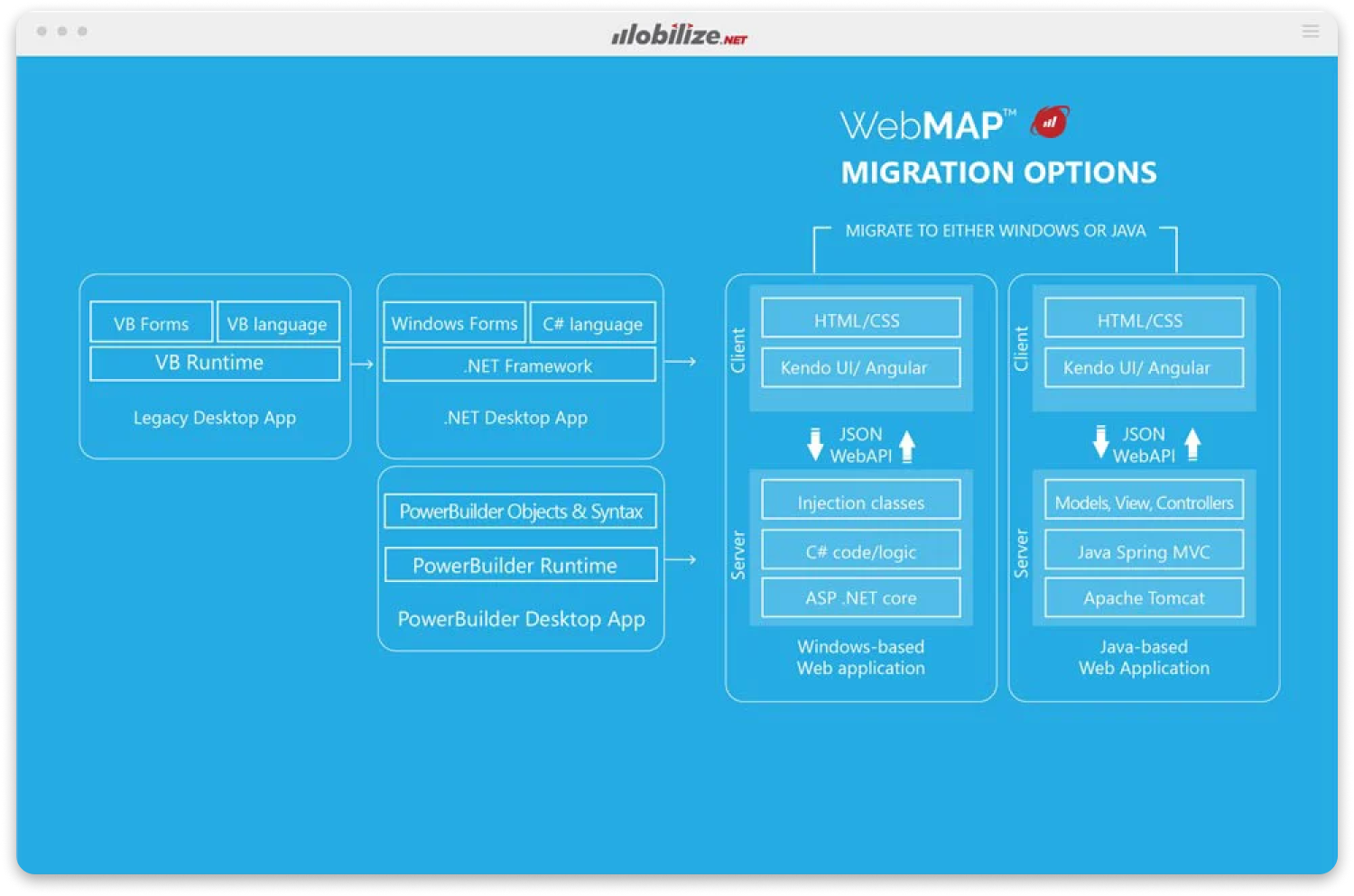Transformation Services
Not Sure Where to Start?
Transformation Services
Not Sure Where to Start?
Transformation Services
Not Sure Where to Start?

Migrate your Xamarin applications to .NET MAUI to enhance cross-platform performance, improve maintainability, and access the latest features for building modern, responsive apps on iOS, Android, and Windows.
WebMAP for Xamarin to MAUI modernizes legacy Xamarin applications. With Xamarin, you could build cross-platform apps using C# and share a lot of code across platforms. But, here's something crucial you should know: Xamarin support ended on May 1, 2024. Yep, it's officially out of support. So, like all things tech, evolution is inevitable, and it's a good time to consider the move to .NET MAUI.
New graphics API in .NET MAUI offers a lot of native functionality. Xamarin.Forms, third-party libraries and custom renderers can be replaced.
Web apps can be complex. WebMAP mov
Migrating from Xamarin to .NET MAUI (Multi-platform App UI) provides significant benefits, combining modern features, improved performance, and simplified development.
Namespace Changes:
Handlers Replacing Renderers:
Blazor Integration:
Improved Gesture Recognizers & Platform-Specifics:
Performance Boost:
New Lifecycle Events:
Built-In Dependency Injection:
Graphics and Drawing Enhancements:
Migrating to .NET MAUI ensures your apps are future-proof, easier to maintain, and provide an enhanced user experience across all platforms.
Migrating from Xamarin to .NET MAUI presents several challenges, but with the right approach, these obstacles can be effectively managed.
One of the primary challenges is adjusting to the new project structure—while .NET MAUI simplifies development with a single project targeting multiple platforms, reorganizing existing Xamarin projects requires careful planning to avoid code duplication.
Namespace changes can also pose issues, as many controls have shifted from Xamarin.Forms to Microsoft.Maui.Controls. Address this by using automated refactoring tools to streamline code adjustments.
Another common hurdle is converting custom renderers to handlers; while handlers offer improved performance, transitioning requires understanding the new architecture.
UI updates can be challenging as some Xamarin controls have been modified or replaced—conduct a thorough audit of existing UI components to identify necessary changes.
Dependency injection (DI) integration may require replacing third-party DI containers with .NET MAUI’s built-in system for consistency.
Additionally, app lifecycle events have been restructured, necessitating updates to startup and shutdown logic.
Performance tuning is crucial during migration to ensure the new application meets user expectations. To minimize disruption, consider a phased migration and utilize comprehensive testing at each stage.
Lastly, user training and documentation updates are essential to ease the transition for development teams. By following a structured plan and leveraging available migration tools, you can successfully overcome these challenges and take full advantage of .NET MAUI’s features.
Our AI-assisted cloud application migration tools streamline the Xamarin migration process, reducing project workload by 4X while ensuring tamper-free business logic migration to minimize defect risks. We also offer optional fixed-price projects to eliminate financial uncertainty. The result? Clean, understandable code built with technologies like C#, HTML, Angular, CSS, and ASP.NET Core—without proprietary runtimes or long-term virtualization costs. You’ll own maintainable code that’s ready for future enhancements.
We start by analyzing your Xamarin application, identifying key components, business logic, and dependencies to create a tailored migration strategy.
Using AI-assisted tools, we convert Xamarin code to .NET MAUI with technologies like C#, Angular, and HTML, ensuring the business logic remains intact and the UI is modernized.
Converted code is optimized for performance, and necessary integrations with external systems or APIs are updated to ensure seamless functionality.
We conduct rigorous testing to ensure functionality, stability, and performance, followed by a smooth deployment of your new, maintainable application.

8834 N Capital of Texas Hwy, Ste 302
Austin, TX 78759
Call us: +1.512.243.5754
info@wearegap.com